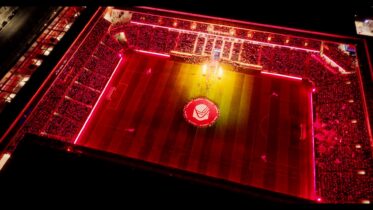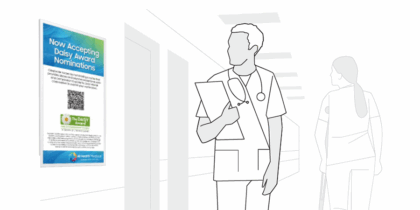The drive-thru lanes of North America are about to get a lot more digital — as in outdoor digital signage.
Outdoor advertising has always been important to quick-service restaurants (QSRs), banks and other fast-service retailers, but in the last 12 months, we’ve seen a big uptick in the number of major companies in those sectors that are seriously looking at converting the paper and plastic signs in their drive-thru lanes to more impactful and efficient outdoor digital signage displays.
The big fast food companies are all looking at conversions and additions, and some of them already have active test projects running, with more on the way. We’re seeing a similar level of interest and energy in the banking industry — where drive-thru lanes are also common — and at gas retailers that have convenience stores.
Addressing the Visibility Challenge
Screens for outdoor advertising in drive-thru lanes aren’t an entirely new concept. But the early days, which involved trying to get LCDs bright enough to cut through mid-afternoon sun and survive all the other elements Mother Nature could conjure, were challenging. It was expensive, the screens didn’t tend to last and the picture quality was rarely as good as desired.
That’s all been changing, and at Samsung, we’ve developed a solution akin to a “killer app” for the drive-thru business.
We’re now marketing displays that, at 2,500 nits, allow beauty shots of cheeseburgers and tacos to easily cut through daylight glare, and are designed to open up the digital drive-thru business to countless companies that service and supply QSR and other drive-thru markets.
Leveling the Playing Field With the Samsung OH Series
A lot of engineering is required to make a screen bright enough to be truly daylight-readable, and also capable of handling the heat load from both the sun and the backlights that illuminate the LCD image. Clever engineering also goes into sealing displays against rain, snow, dust and vandalism.
The high level of engineering required means that the digital drive-thru business, to date, has been served by a handful of companies focused on those solutions and staffed by engineers.
However, many of the traditional drive-thru businesses for food, banks and other aspects of retail have been served for decades by companies that build enclosures for pre-sell promotions and menus that use conventional fluorescent or LED lighting, with printed material that gets swapped out every few weeks. Although these companies have a deep knowledge of the needs of the market, not all have the technology expertise to support client brands on the transition to digital.
Samsung OH Series offers a solution. Simply put, Samsung has taken on all the engineering challenges associated with inserting outdoor screens that are both reliable and impactful. Companies that service the market can simply retrofit existing enclosures that have static, backlit signs with these new weather-sealed, ruggedized digital displays. Or, they can start selling their clients on new digital pre-sell and menu displays, designing their own enclosures without the need to tackle the steep learning curve involved with engineering LCDs for outdoor use.
The OH Series makes outdoor signage available to more businesses, simplifies deployments and delivers a high-quality solution. Partnerships have been developed with precision metal fabricators and those who specialize in secure display enclosures and mounting systems in order to make the transition even easier.
Relying on High-Impact Visuals
So why the interest from retailers — whether they sell burgers and fries or offer lines of credit? For QSRs, it’s simple: Drive-thru makes up 60 percent or more of sales for most QSRs, and any tactic that can drive larger orders goes to the bottom line.
That’s why many drive-thrus have pre-sell messaging ahead of the menu and order position, and why bright, easy-to-read and attractive visuals at that order position can make a real difference. High-impact visuals draw consumer eyes to certain items, influencing what they request. Digital signage enables operators to change what’s promoted depending on the time of day, such as “disappearing” breakfast menu items at 11 a.m., or even adjusting pricing by time of day, by for example charging more for late-night customers.
Banks are using digital signage in their drive-thrus to remind account holders of services available inside the branch, as well as evolving mobile and online capabilities.
Fuel retailers are using screens in the forecourt area — even topping pumps — to drive consumers inside to make high-margin snack purchases. They’re also using Samsung’s OM Series, a more finished version of the same high-brightness technologies built for inside street-facing windows, to feature screens positioned inside the stores, but facing outside.
The big adoption wave for outdoor digital signage is building, but isn’t quite upon us yet. Around Samsung, we believe the big moment will come when a global fast-food brand goes from trial to rollout.
Once a major brand makes the move, we expect much of the market will follow. And that means digital displays will be as common outside as they now are on the order boards over fast food counters.
Whatever the size of your business, we offer a digital signage solution to fit your needs. Check out our full range of digital products and solutions here.








